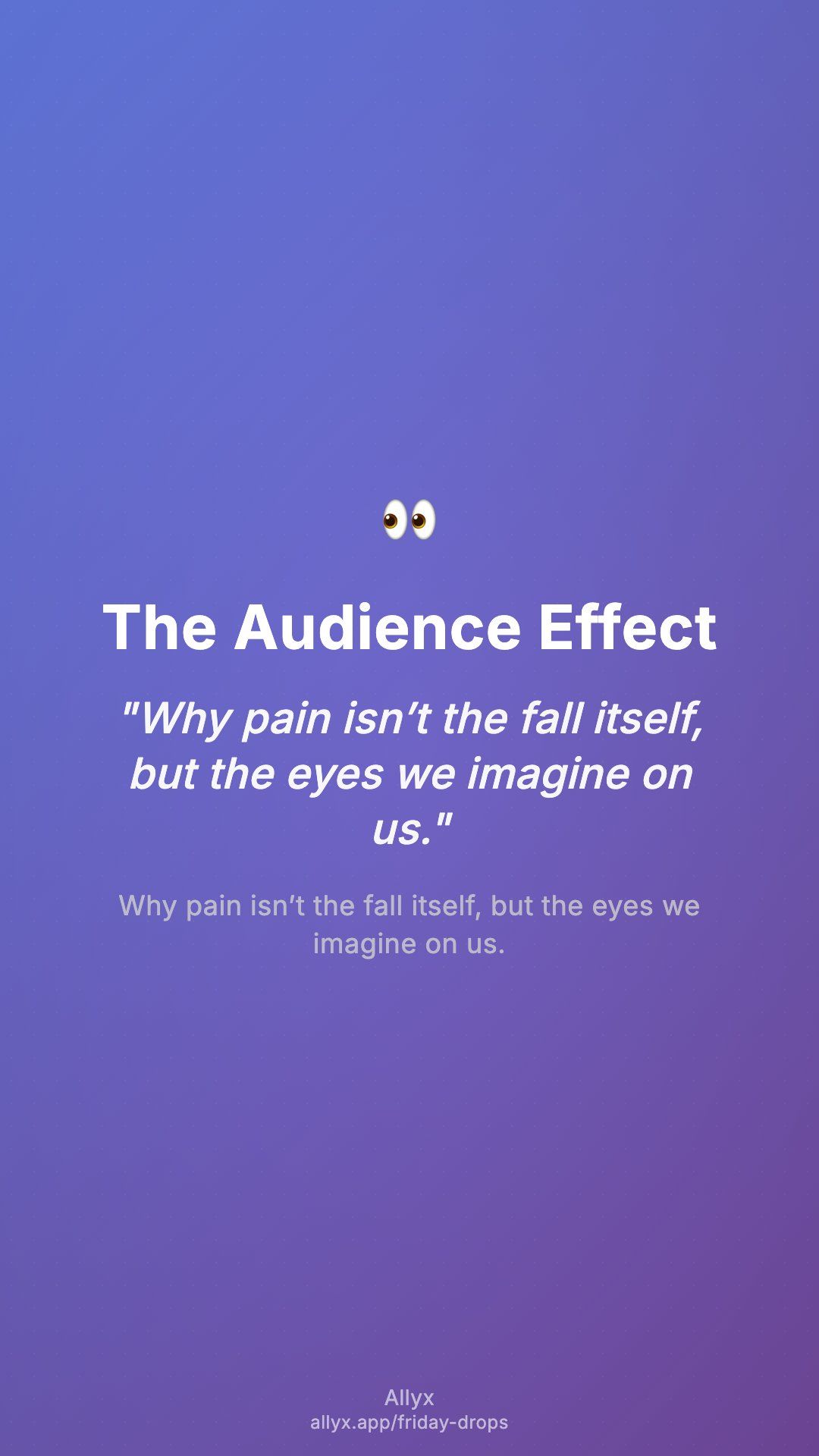The Audience Effect
Why pain isn’t the fall itself, but the eyes we imagine on us.
Saturday, August 23, 2025
Metaphorical Narrative
A kid trips on the pavement. For a second he winces, dusts his palms, and looks ready to carry on.
But then his eyes dart up — he sees someone watching. Suddenly his lip trembles, tears spill, and the stumble becomes a crisis.
It’s not the bruise that stings. It’s the spotlight.
Adults play out the same script in different theaters. A woman gets dumped and feels gutted, not by the end itself, but by the imagined verdict: “I wasn’t good enough.” Later, in calmer light, she realizes all relationships end one way or another — and she’s still intact.
Core Insight
The fall isn’t the real pain. The audience is.
What you feel in those moments is a selective cry — an automatic reflex where the emotional brain hijacks the rational mind. It interprets the event through the imagined gaze of others: “What do they think of me now?”
This isn’t weakness. It’s wiring. Our ancestors survived by being accepted, so the brain still treats perception as life-or-death. The trick is knowing when the hijack has taken over, and reclaiming the scene with awareness. That’s where emotional maturity comes in: separating the bruise from the imagined judgment.
Saturday Experiment
- Catch the spotlight. Next time something small goes wrong (trip, stumble, slip of words), notice whether you’re reacting to the event or the imagined audience.
- Name the hijack. Say to yourself, “This is perception, not reality.”
- Reframe in real time. Remind yourself: falls happen, relationships end, mistakes occur. It doesn’t mark your identity.
Sunday Reflection
- When have I felt more hurt by how it looked than by what actually happened?
- How does my “selective cry” show up in adult form — relationships, work, friendships?
- If I separated the event from the audience, what truth about myself would remain untouched?

